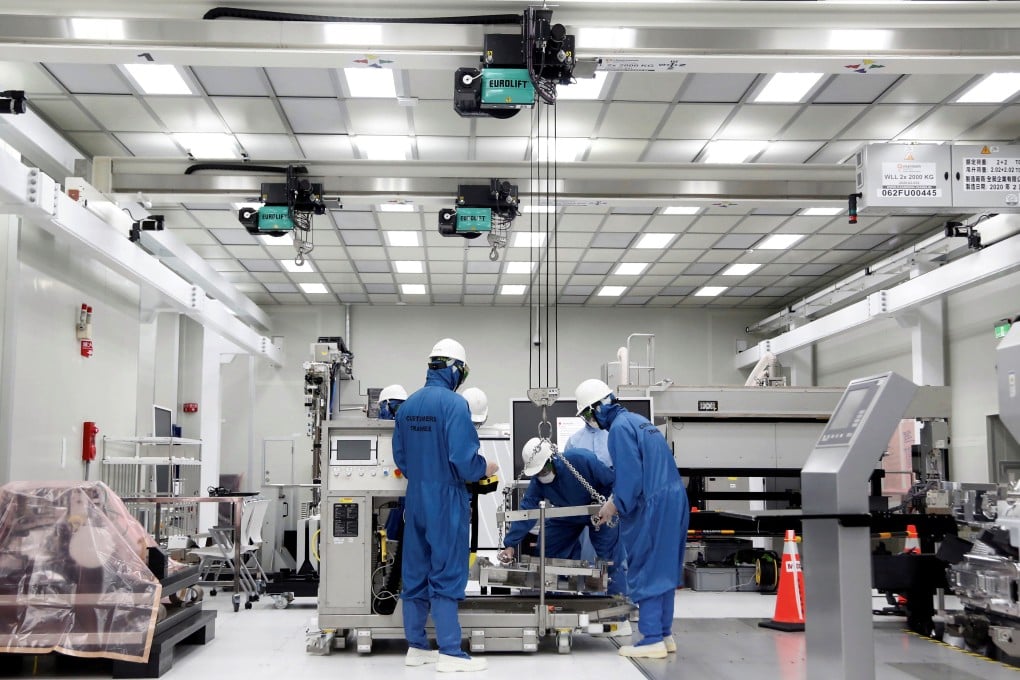China’s imports of Dutch chip-making equipment surged tenfold in November after Washington tightened restrictions
- China imported 16 lithography systems from the Netherlands last month for US$762.7 million, a massive year-on-year spike in spending on the critical tools
- Nearly all of China’s spending on imported lithography systems in November came from the Netherlands and Japan, which increased export restrictions this year

China’s imports of critical chip-making lithography systems from the Netherlands surged 1,050 per cent by value in November, in a sign that domestic semiconductor firms are not yet cut off from receiving orders on certain advanced equipment in the wake of tightened US export rules.
China imported 16 of the Dutch projection systems valued at US$762.7 million last month, a tenfold year-on-year increase. That compares with 21 lithography systems imported from the country for US$672.5 million in October. The 46 per cent spread in average price per unit suggests Chinese firms are continuing to get their hands on more advanced systems even as Washington has tried to thwart such efforts.
The Netherlands is the biggest exporter of lithography machines, used to make the world’s most advanced chips, almost all of which come from one firm, ASML.
In total, China imported 42 lithography systems in November for US$816.8 million. Fifteen of those came from Japan, home to industry heavyweights Canon and Nikon. Together, the Netherlands and Japan accounted for nearly the entire amount China spent on such imports last month.
Lithography tools are complex projection systems that are the most important of the 10 categories of equipment needed in the process of making an integrated circuit. China is considered years behind in this tech and has largely failed to narrow the gap with leading firms despite heavy government investment.
Even as Beijing has spent years pushing an agenda of technological self-reliance, less than 5 per cent of lithography systems used in Chinese fabs were made in the country as of 2021, according to data presented by state-backed CanSemi at an industry forum in August
Japan and the Netherlands have rolled out their own export controls on chip-making equipment, affecting sales to China, after both agreed in January to a US request to do so.